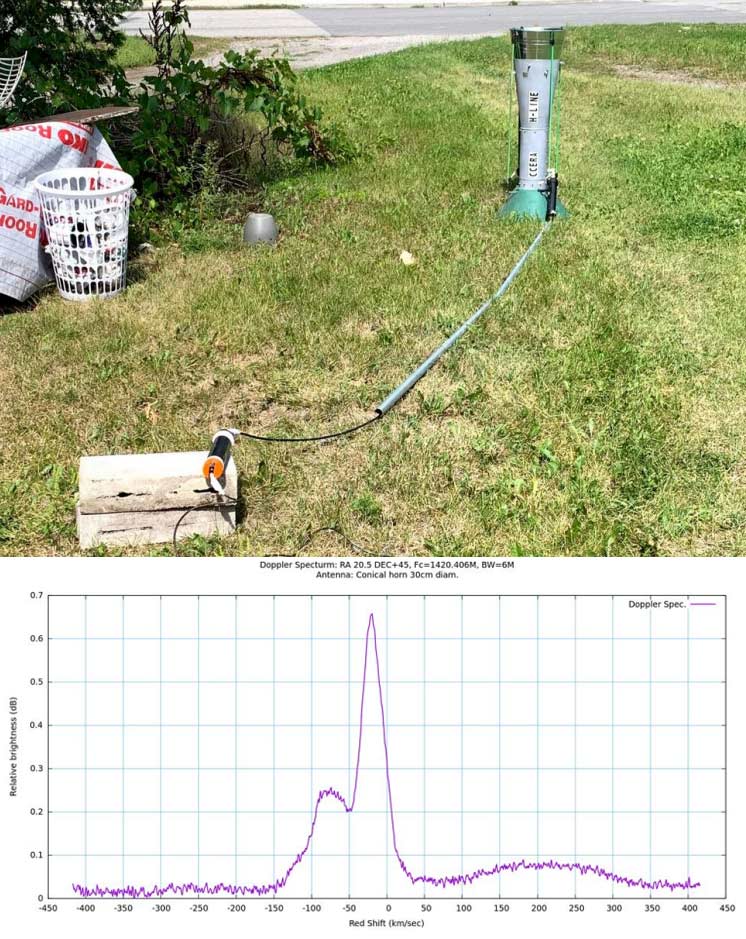CCERA Memo on Building Small Introductory 21cm Telescopes for use with SDRs
CCERA is the Canadian Centre for Experimental Radio Astronomy which is run by Marcus Leech who is well known for experimenting with low cost SDR based radio astronomy projects. In the past we've seen information from him about pulsar observations, meteor detections, solar transit observations, and hydrogen line observations.
In his latest memo Marcus details his findings with the use of small radio telescopes for making hydrogen line observations. His first tests are with a 30 x 60 cm 2.4 GHz WiFi grid antenna where he discovers that the out of the box unmodified feed gives good results. We note that in our own Hydrogen line tutorial we made use of a 60x100cm WiFi grid.
While these WiFi grids are relatively cheap, Marcus tests an order of magnitude cheaper solution based on a tall metal "Maple-Sap" bucket which are commonly found in Canada. A horn antenna is constructed out of the 24cm diameter bucket simply by attaching a feed (wire) connected to a type-N connector, fitted ~8.8cm from the bottom of the bucket. This results in a signal almost as strong as the 60cm WiFi grid. A second test with a larger 30cm bucket fitted onto an existing 24cm horn antenna yielded results on par with the WiFi grid. A third test was done with a 6-turn Helix antenna, however it resulted in poor performance.
Marcus notes that almost anything that is shaped like cone could be modified into a horn antenna with a little DIY construction. He mentions that one alternative to the maple-sap bucket which could be hard to find outside of Canada might be a "French Style" steel floral bucket.

Marcus notes that almost anything that is shaped like cone could be modified into a horn antenna with a little DIY construction.
In France, you can use “un seau à Champagne” 🙂